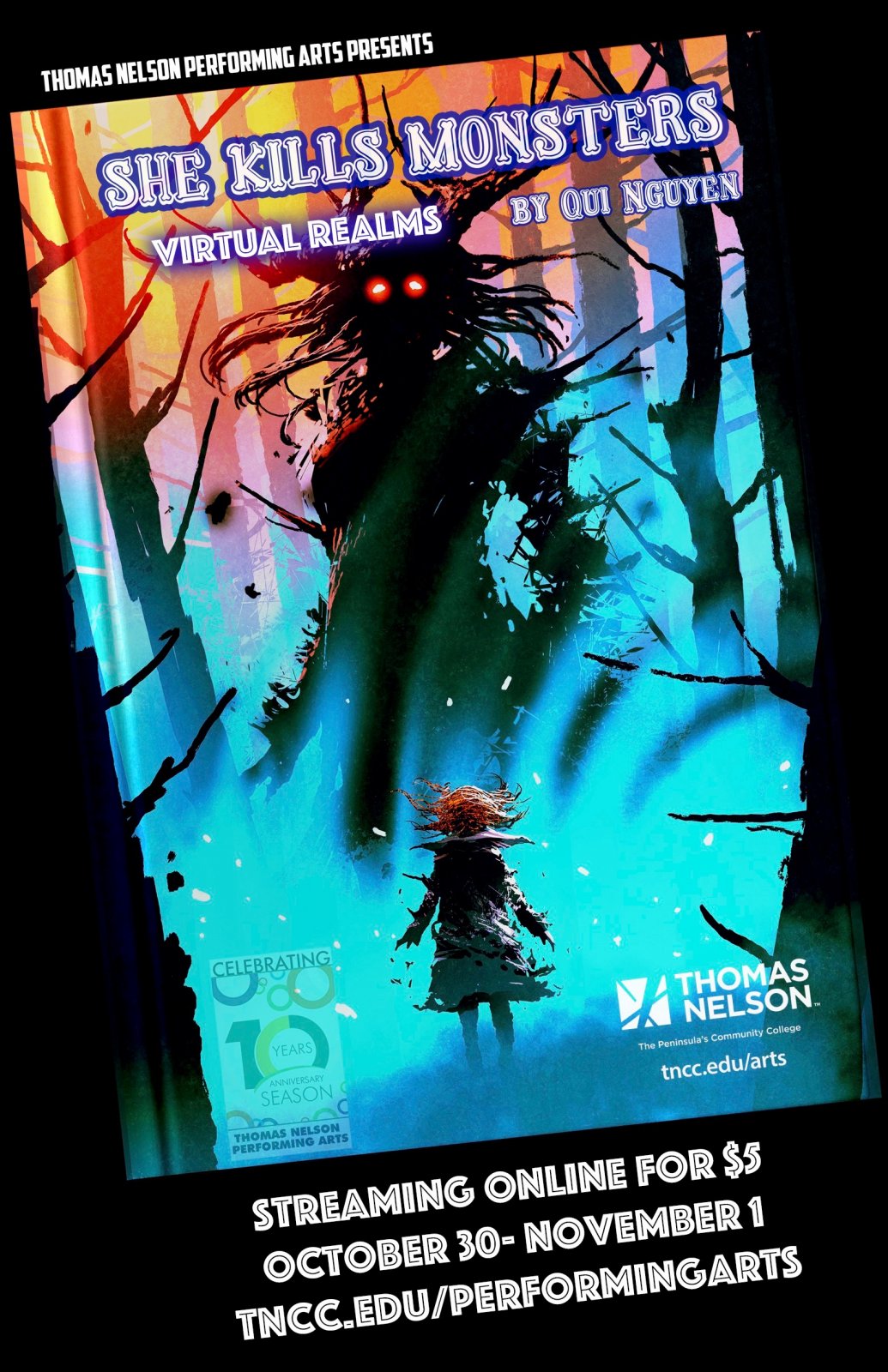Theater Production, 'She Kills Monsters' Now Online

The ability to improvise is important in theater. From the writers and directors to the actors and production crew, they all have to be ready when things don't go as planned. They all know that sooner or later, something will go wrong. How they handle that will determine the success or failure of a performance.
For everyone involved in Thomas Nelson's production of "She Kills Monsters: Virtual Realms" they experienced that firsthand, from the postponement of the spring show until the last weekend in October, to the playwright making changes to include the coronavirus pandemic, to the change of an in-person performance to a virtual one. However, if it had been a class, they all would have passed with flying colors.
"This cast is phenomenal, and they're definitely troopers," said Hannah Styron, who plays Agnes. "They've been sticking with it and giving it their all. They're doing a great job with that. I'm super excited for it. I cannot wait to see how it turns out. From the clips and bits that I've seen, it's definitely going to be amazing."
The play, which originally was set for early April in the Dr. Mary T. Christian Auditorium on Thomas Nelson's Hampton campus, will be a virtual performance Oct. 30, 31 and Nov. 1. It will go "live" at 5 p.m. Oct. 30 and be available through Nov. 1., and can be accessed at tncc.edu/performingarts and facebook.com/TNCCPerformingArts.
As is fitting on a college campus, it was a learning experience for everyone. It was filmed through Zoom, so director Dana Margulies Cauthen and Performing Arts Chair Michael Sundblad had to learn how to do that, which wasn't easy. Visual Elements Designer David Garrett, who had finished stage designs for an in-person performance, had to create effects that fit in a virtual world. And the actors had to learn to act alone, in front of their Zoom cameras, instead of in groups on a stage.
Many challenges
Cauthen did the filming entirely online using the Zoom Video Conferencing Platform, and Sundblad handled the editing.
"The challenges for me have been learning how to do the video editing," Sundblad said. "My advice, if someone is trying to do pre-recorded, is make sure you have really good video-editing software, and someone who knows what they're doing. It's a lot of work stitching everything together. And it can't be done in a stock film-editing app that comes with your computer. You need some pretty good software to make it work."
Cauthen agreed there was a big learning curve to this.
"I've had to do a whole lot of self-teaching on how to use this," she said. "There have definitely been times when I just wanted to chuck it. It's hard. I'm straddling the line between film and theater, and I don't have a film background."
She admits some scenes might appear to have more of a Zoom meeting feel, but that was by design.
"We decided we had to lean into that as hard as we could," she said. "There are some things that are so obviously filmed within video conferencing that I thought we'll just go ahead and try to make a joke out of that."
Different aspect of design
For Garrett, the changes were fun because he had the opportunity to work more with special effects. He used filters on Snapchat, and tools in Photoshop to make monsters appear and disappear. Set changes also were much easier.
"The fact that it's on Zoom and we can just turn the camera off is great," he said. "It's a win-win for us."
Everyone involved said the effects Garrett used were an advantage of an online production.
"I do think the backgrounds we are using are pretty spectacular settings that we definitely wouldn't have gotten on stage," Cauthen said.
New way to act
For Styron, learning to act out her scenes on her own was particularly challenging.
"The way we filmed is so completely different than how I act," she said, noting actors are taught to feed off, and react, to one another, which couldn't be done for this show. "I have talked to some of the other actors, and they were all struggling with that too just because it's such a mindset change."
Trust and imagination became important components, especially in the fight scenes.
"We would be fighting no one, and that would be really hard too because you don't know, you're just swinging," Styron said. "We trusted Dana."
Cauthen felt the same way.
"It's been an exercise in trust," she said, especially because what the actors are seeing on the Zoom feed and what she is seeing aren't the same. "When I tell them … I need you looking this way even though when you look at yourself you look backward, the cast has to really, really trust what we're doing. That's been a challenge."
Styron pointed out one other advantage with the online version.
"I think it let us play around in our imagination a little bit more, which is literally what 'Dungeons & Dragons' is," she said, referring to the game that is central to the play. "It helped us get a little more into that thinking of an actual 'D&D' game because it was virtual."
It all comes together
Sundblad, and the others, admit there were times in the past five or six months when they thought the show wouldn't go on. But they are all glad it will, despite all that's been thrown at them.
"We've just been rolling with all these changes as they've come up over the months," Sundblad said.
For Styron, she keeps thinking what Garrett told them after a particularly rough rehearsal.
"David just looked at us and said, 'Guys, just remember we're still doing theater. It may not look like theater. It may look like something completely different, but we still get to do this thing. How lucky are we?'"
